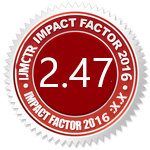Abstract :
— To magnify network of lifeless node in Wireless Sensor Networks (WSNs).The selection of path for data deportation are eclectic in such a form that the over all energy absorbed along the path is lessen. Wireless sensor network is a set of a large number of small devices which gain information from physical environment using sensor nodes. These nodes measure, store and send the information to other nodes in the network. To transmit data sensor nodes require battery power. So power boost is a major issue in wireless sensor network. To support high extensible and better data gathering, sensor nodes are often grouped into dislocate, non-flapping subsets called clusters. An efficient routing algorithm is required to utilize power of nodes. In this paper we aim to improve network lifetime using LEACH based protocol. We are using DBEA-LEACH (distance-based energy aware) additionally selects a cluster head not only based on distance, but also by examining residual energy of the node greater than the average residual energy level of nodes in the network. We propose the enhanced LEACH convention for first node die time upgrade. In this paper i am doing one more enhancement to use Dijkstra’s algorithm as routing algorithm to reduce power consumption. We are using Dijkstra‟s algorithm to reduce the power consumption and finding the shortest power consumed path between Source to Destination using minimum number no nodes.



